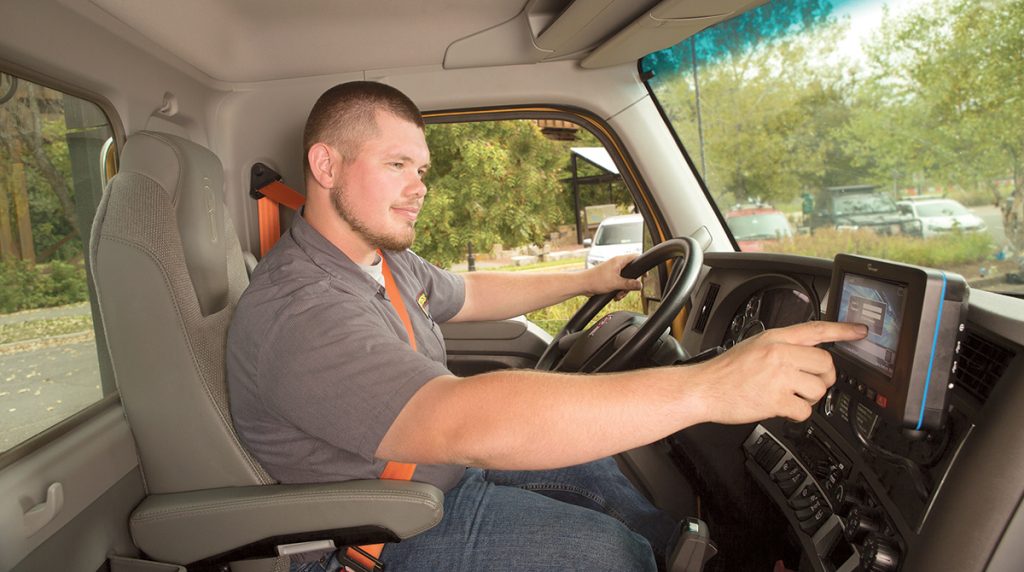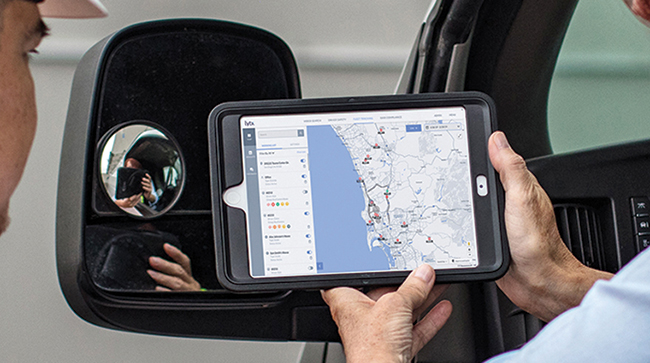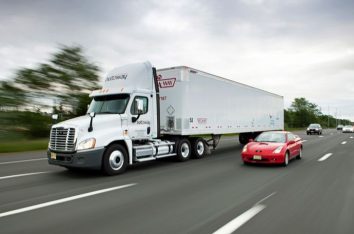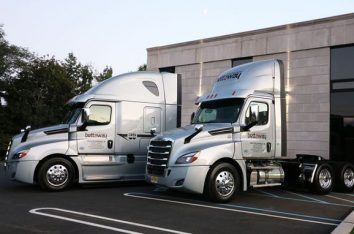Gary Frantz, Transport Topics, Jan 18, 2022, Full article
For fleets and trucking companies, building a reputation for safety is a key cornerstone for both retaining good drivers and recruiting the best candidates. While technologies have provided real-time data and new insights into how to reduce incidents and help drivers to improve their skills, many fleet executives say it boils down to trust, culture and accountability.
Greg Orr, executive vice president of U.S. Truckload for TFI International, and president of truckload carrier CFI, points to trust as a starting factor.
“These are professionals, from day one, we emphasize they are the captain of the ship, and we trust them to use their judgment and experience to make the call to shut [an unsafe situation] down,” he said. “They trust us to provide them with the equipment, training and support to be as safe as possible.”

The Canadian-based carrier is ranked No. 5 on the Transport Topics Top 100 list of the largest for-hire carriers in North America.
Proactive safety training also helps experienced drivers hone their skills and eliminate bad habits, and younger drivers develop their skills. Curtis Carr, vice president of safety and risk management for LTL carrier Estes Express Lines, says its training has been continual and evolving by applying data and insights from real-time information via telematics and in-cab recorders capturing video and motion data, as well as driver input and feedback. When implemented six years ago, the recorders were met with skepticism, but communication was key for drivers to buy in.
“We went on a road trip to many of our terminals, met with our drivers to explain what we were doing and why, how it would work and how it would help them,” he noted. “We told them what we’d be measuring, and the parameters for what events [the system] would track.”

Initial resistance evaporated quickly once drivers understood the purpose and gained some experience with the system — and the coaching it supported.
“It’s just like a football coach,” Carr described. “These are the game tapes we are studying. If there’s something you’re doing well, keep it up. If there’s something we can improve, let’s work on it. We bring coaching opportunities to the driver’s attention in a positive, encouraging environment.”
Richmond, Va.-based Estes Express is ranked No. 12 on TT’s Top 100 for-hire carriers list.
Providing a Safe Environment
Jeff Mercadante, vice president of safety and risk for LTL carrier Pitt Ohio, contends that a fleet’s safety culture factors into recruiting and retaining drivers. “They know we put safety first. We are ethical, we won’t have them break the rules in any way,” he said. “Attitude and work ethic are everything. Our job is to provide the necessary training and provide the best equipment with the latest safety technologies so they can do their jobs safely.” The Pittsburgh-based carrier is ranked No. 48 on TT’s Top 100 for-hire carriers list.
When drivers at CFI were surveyed on why they chose to work there, the overwhelming majority pointed toward the fleet’s safety record, Orr said
“Seventy percent answered that they’ve read reviews about us and how we emphasize a captain of the ship mentality,” he said. “They watch videos and talk with other drivers. That’s the best endorsement we can ask for.”
Orr added that it’s important to connect with drivers and respect their concerns.“That’s really the key, staying connected with that driver, resolving issues, being there for them at all times,” he explained. “At the end of the day they want to be safe and we give them the support, responsibility and accountability to do that.”

John Vaccaro, president of Bettaway Supply Chain Services, a major provider of shipping and pallet supply services, also cites as an integral part of an effective safety culture — and a key driver incentive — modern, well-maintained equipment.
“Nobody wants to break down. It’s our job to give them a truck that’s properly maintained so they can turn the key and go without any safety issues,” he noted. “It’s the driver’s job to do a thorough pre-trip, and if something comes up, flag it so we can fix it before he goes out. And point out anything when he comes back in.”
He also echoed the experience of other fleets with in-cab cameras and video coaching, calling it one of the biggest safety game-changers, next to collision avoidance technology. “What’s better than stopping a truck before an accident can occur? It’s been nothing but a great tool to help us defend our drivers from false claims, and coach them, in a positive manner, how to improve their skills and become even safer,” he said. “I can’t understand anyone operating a fleet these days who would not have a drive-cam.”
Safety Technology
Innovations in safety programs such as management software, real-time driver performance data and analytics have changed how fleets approached keeping their drivers safe.
Idelic provides driver performance and safety management platforms used by many fleets. It serves as a system-of-record and an integration hub tying together data from ELDs and in-cab camera vendors, dispatch systems, human resources software, the FMCSA portal, LMS platforms and other data sources, notes Hayden Cardiff, Idelic’s founder and chief innovation officer.

“Safety and training should be a holistic and companywide process,” Cardiff said. “Not just the safety team [and drivers], but risk managers, operations, planning, sales and executive level management should be unified in how [safety] happens.”
Among the biggest challenges, he said, is moving freight efficiently while staying safe.
Cardiff says for Idelic and its clients, the proverbial rubber meets the financial road in three areas: lower injury claims, declining accidents per million miles and improved driver retention. He cites results with one large national trucking fleet, which the year prior to adopting Idelic had won top industry honors for best safety performance. After one year, its accident rate per million miles declined 43%. On the retention side, another midsize fleet using its platform saw driver turnover decline by 20% through better driver engagement, measurement and development programs.
“When drivers feel like they are being watched after, versus watched over, they really respond. That’s a fleet they want to work for. And that’s what we help facilitate,” added Cardiff.
Fleets also are flirting with other innovations such as continuing adoption and refinement of driver scorecards and more precise tools for measurement of safety performance along with customer service and productivity. Adoption of new training methodologies such as gamification, remote learning and more interactive training via the tablets and ELD units now are becoming ubiquitous in trucks. The challenge for fleets is weighing the costs of new systems. “Customers want you to be safe hauling their freight, but at the end of the day, some are reluctant to help us recoup [the cost of] these investments,” CFI’s Orr noted. “The positive safety benefit is there for sure. The challenge is as more driver-assist technologies go in, how do you measure the benefits, whether it’s safety related, from reduced driver fatigue or other factors.”

At the end of the day, safety is a function of people and the attitude, action and accountability they bring to the job. For Gary Johnson, director of safety services for Lytx, it’s also about a track record of providing proven and trusted technology.
“These young drivers today can smell a con a mile away. You have to be up front with tech, why you are using it, and how it works,” he said, adding that technology that gives false alarms or inaccurate notifications will immediately lose the trust of the driver — and take five times the effort to win it back.
“What we have learned over 23 years in business is you need support from your entire leadership team, a system that delivers reliable and accurate data, and integrates with your safety program and culture without overburdening the actual process,” Johnson said. “We really have to make a difference [and enable fleets] to address the behaviors that are causing incidents or near incidents.”
Read More


